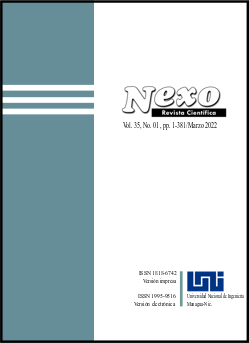Design of a compact and sustainable physical-chemical system for drinking surface waters in remote areas of Arequipa-Perú
DOI:
https://doi.org/10.5377/nexo.v35i01.13919Keywords:
physical-chemical treatment, surface water, purification, sustainable, solar radiationAbstract
A physicochemical treatment system for surface water has been designed and manufactured to provide drinking water to remote areas that do not have access to basic service. The system consists of four main units; the first: pre-treatment, it filters the particles and sediments present in the water from a nearby surface source; the second unit: primary treatment; doses chemical inputs for coagulation and generation of flocs to sediment the particles as sludge and remove them later; the third secondary treatment unit; Filters microscopic particles and microbial or pathogenic agents and water is chlorinated to provide the required drinking quality according to regulations. The fourth unit, energy generation; It takes advantage of solar radiation and converts it into electrical energy so that the equipment operates properly. The results indicate that it is feasible to implement the proposed system to provide water suitable for human and in compliance with the standards of the current national regulations intended mainly for vulnerable communities.
Downloads
1589
Downloads
Published
How to Cite
Issue
Section
License
Copyright (c) 2022 Universidad Nacional de Ingeniería

This work is licensed under a Creative Commons Attribution 4.0 International License.
The authors who publish in Nexo Scientific Journal agree to the following terms:
- Authors retain the copyright and grant the journal the right of the first publication under the license Creative Commons Attribution License, which allows others to share the work with a recognition of the authorship of the work and the initial publication in Nexo Scientific Journal.
- Authors may separately establish additional agreements for the non-exclusive distribution of the version of the work published in the journal (for example, in an institutional repository or a book), with the recognition of the initial publication in Nexo Scientific Journal.
- Authors are allowed and encouraged to disseminate their works electronically (for example, in institutional repositories or in their own website) before and during the submission process, as it can lead to productive exchanges, as well as earlier and greater citation of published works.










